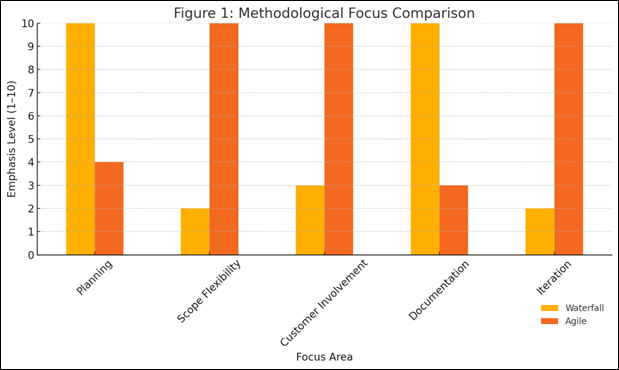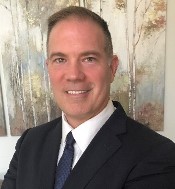Aligning Waterfall and Agile Methodologies
in Hybrid Project Environments
PEER REVIEWED PAPER
By Dr. Steve Ford, Dr. Jay C. Hanan, Kelly Benson, PMP, and Sarah Ford, PMP
Colorado, USA
The growing complexity of project portfolios in modern organizations has led to increased adoption of hybrid project management methodologies that integrate elements of both Waterfall and Agile frameworks. While hybrid models promise flexibility and structure, aligning the fundamentally different objectives and philosophies of Waterfall and Agile methodologies presents significant challenges (Kerzner, 2025). This article examines the sources of conflict inherent in hybrid environments, the organizational and cultural barriers to alignment, and strategies for mitigating these challenges to enhance project outcomes.
Introduction
Over time, project management approaches have evolved to meet the varying demands of different organizations, ranging from industries that rely on rigid planning due to regulatory requirements to those operating in fast-paced environments where flexibility is crucial. Waterfall and Agile methodologies represent two ends of this spectrum. According to the Project Management Institute, Waterfall emphasizes sequential development and thorough documentation, while Agile prioritizes iterative progress and customer collaboration (PMI, 2021). Hybrid project settings are designed to combine the best elements of different methodologies. Still, blending these approaches can be challenging, especially when their discreet goals do not align well.
Inherent Methodological Contradictions
The most immediate difficulty in aligning Waterfall and Agile stems from their core philosophical differences. As illustrated in Figure 1, Waterfall methodologies emphasize upfront planning, a fixed scope, and a linear progression. Agile, conversely, values responsiveness to change, evolving requirements, and continuous delivery (Beck et al., 2001). In a hybrid model, these divergent priorities can create conflict in setting project goals, timelines, and performance metrics. For example, while Agile teams may aim for speed and iterative value delivery, Waterfall stakeholders often prioritize adherence to the original scope and schedule.

Figure 1: Comparison of Waterfall and Agile focal points and emphasis levels. Adapted from PMI (2021) and Beck et al. (2001).
Organizational and Cultural Barriers
Beyond methodological differences, organizational culture has a significant impact on the success of hybrid models. Waterfall-based cultures often maintain hierarchical decision-making and rigid reporting structures. Agile environments promote autonomy, cross-functional collaboration, and frequent feedback loops (Rigby, Sutherland, & Noble, 2018). Attempting to merge these cultures can result in confusion, resistance, and miscommunication. Additionally, performance evaluation systems rooted in Waterfall practices may inadvertently penalize Agile behaviors, discouraging innovation and agility (Kloppenborg et al., 2023).
More…
To read entire paper, click here
How to cite this article: Ford, S., Hanan, J., Benson, K., and Ford, S. (2025). Bridging the Gap: Aligning Waterfall and Agile Methodologies in Hybrid Project Environments, PM World Journal, Vol. XIV, Issue VIII, August. Available online at https://pmworldjournal.com/wp-content/uploads/2025/08/PMWJ152.pdf
About the Authors

Steve Ford
Colorado, USA
![]()
Steve Ford holds a BS from the US Air Force Academy (2004), an MS in Space Studies from the University of North Dakota (2009), and a Doctorate of Management – Project Management from Colorado Technical University (2021). Steve is currently the President and CEO of Advanced Applied Project Management Solutions, Inc., a project management, change management, and risk consulting firm. He holds numerous project management-related qualifications, including Project Management Professional (PMP), Risk Management Professional (PMI-RMP), Agile Certified Practitioner (PMI-ACP), Lean Six Sigma Master Black Belt, and PROSCI Certified Change Practitioner. He can be contacted at Steve@aapms.net.

Jay C. Hanan
California, USA
![]()
Jay Hanan holds two Bachelor of Science degrees from Oklahoma Christian University (1997) and an MS (1999) and Ph.D. (2002) in Materials Science from Caltech. Dr. Hanan attended the Executive Management Program at Stanford in 2015. He developed a novel R&D management method while transferring intellectual property on polymer nanocomposites he developed as a professor at Oklahoma State University (since 2005) to industry, one of over 400 patents, and now serves as a Sr. Technical Fellow in R&D at Origin Materials while maintaining a part time role in academia where he brings real world opportunities including design projects with a PM component to Mechanical and Aerospace engineering students.

Kelly Benson
Colorado, USA
![]()
Kelly Benson holds a BS from the University of Louisiana at Monroe in Occupational Therapy (2001) and a Master’s in Health Leadership from Western Governors University (2022). She is currently pursuing a Master’s in Information Technology with a focus on Data Analytics from Capella University. Kelly works for Optum Home & Community Care as a Manager of Medical Clinical Operations and also consults in healthcare data analytics. She is a Project Management Professional (PMP), a Lean Six Sigma Black Belt Professional, and a Licensed and Registered Occupational Therapist. She can be contacted at Kelly_benson@live.com.

Sarah Ford
Colorado, USA
![]()
Sarah Ford holds a BS from the US Air Force Academy (2004) and an MS in Space Studies from the University of North Dakota (2010). Sarah currently works for York, a Space Systems company, as a Program Manager. She is a Project Management Professional (PMP) and a retired Veteran of the US Air Force. She has over 20 years of operational and managerial experience in the military, as well as nine years of management experience in the Aerospace industry. She can be contacted at Ford50000@gmail.com.









